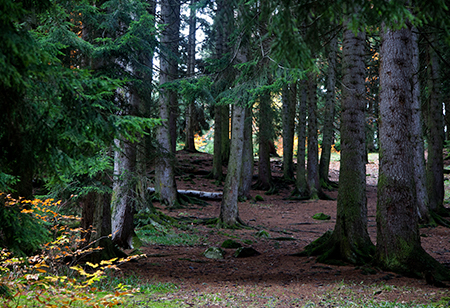Experts say “plant more forests in Georgia to combat climate change”

Planting trees to create new forests on degraded lands and increasing the amount of forest areas in Georgia are two of the best ways to reduce the risk of climate change, finds latest research.
Two Austrian experts, Dirk Gaul and Alexander Horst, visited the small town of Dedoplistskaro in Georgia’s winemaking Kakheti region to study the district’s land degradation and identify optimal species for afforestation.
Afforestation is the establishment of a forest or stand of trees in an area where there was no previous tree cover.
Georgia is facing the problem of land degradation due to climate change. Rehabilitation of degraded lands as an adaptation measure implies various approaches all of them having a greenhouse gas mitigation effect. The afforestation of degraded lands is one of the best solutions due to both the importance of and their role in absorbing greenhouse gases,” said Gaul and Horst.
Between May and September 2015 the pair went out on field visits and took samples from degraded land. After analysing the soil at Dedoplistskaro and looking at the local climatic conditions, the experts identified the optimal species for planting and calculated the projected reduction in annual greenhouse gas emissions.

The experts found Georgia was facing the problem of land degradation due to climate change and it was important to rehabilitate the degraded lands. Photo by N. Alavidze/Agenda.ge.
They chose Dedoplistskaro as an afforestation pilot survey because it was one of the most vulnerable areas in Georgia.
It is economically significant, but has suffered significant land degradation from wind and water-base erosion as well as from salinisation,” the two experts explained.
- Want to know what steps Georgia was taking to better protect its forests? Read the article ‘Georgia makes vital changes to better protect local forests’ by Mariam Papidze in the Analysis section on Agenda.ge.
Gaul and Horst found that with proper action, the area could be fully rehabilitated however for afforestation to be fully successful it should be accompanied with proper measures related to regulation (ownership, insurance, financing), land management (irrigation, drainage) and maintenance (replantation, fencing, protection from grazing, awareness raising among the local population).

Currently there is no official data about Georgia’s forests as relevant surveys have not been conducted. However based on the observations of Georgia’s National Forestry Agency, Georgian forests are mainly "very old” and trees were suffering from several types of diseases. Photo by N. Alavidze/Agenda.ge.
The pair concluded afforestation of degraded lands had much more adaptation than mitigation potential due to the harsh climatic conditions in the region.
Gaul and Horst’s activities in Georgia was part of the European Union (EU)-funded Clima East project to make degraded land in Georgia ready for planting forests through conducting and publishing expert studies.
The findings of such studies build capacity in assessing the potential of afforestation of degraded lands in Georgia, adaptation to climate change and mitigation of greenhouse gas emissions.
The Clima East is an €8 million five-year EU funded project. The Expert Facility is a €2.6 million component of the overall Clima East budget. This individual assignment was completed at a cost of just €10,563 for the provision of two international and two local experts.
 Tweet
Tweet  Share
Share